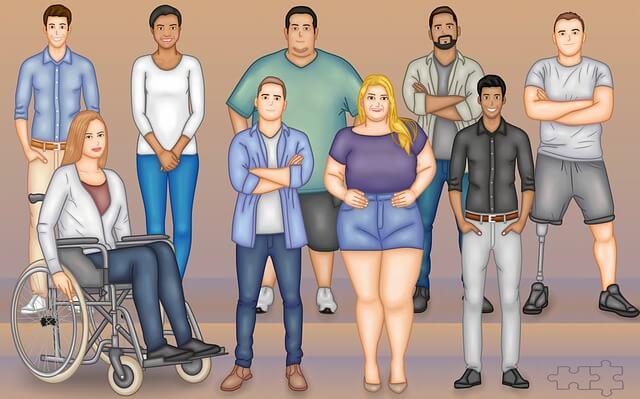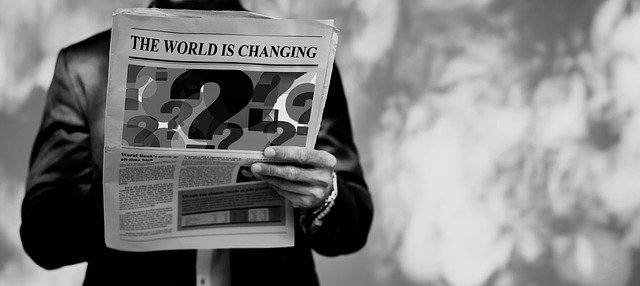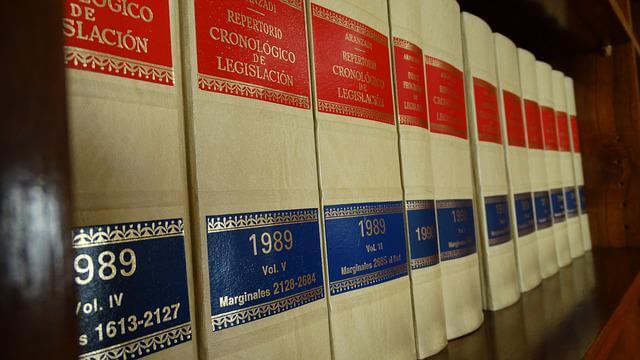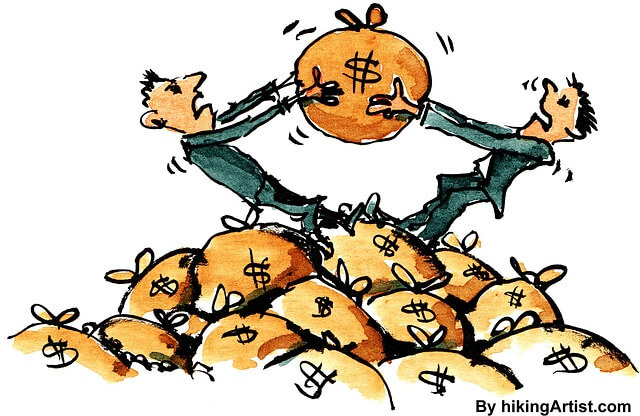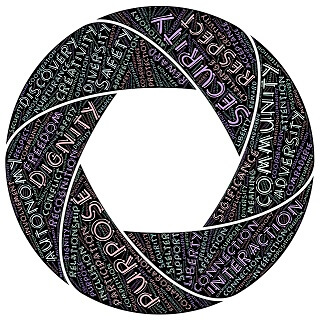Public Service
المقررات الدراسية موسومة بـ "Public Service"
Equality and Diversity
Learn about equality and diversity in health and care. This course is ideal for intermediate learners.
Introduction
The health and social care sector recognises the need to treat everyone equally, and therefore equality, diversity and rights affect all those working in the sector as well as those who use health and social care services.It is important that these terms, equality, diversity and rights, are at the very core of everything that is done.
Equality, diversity and rights ensure that everyone is treated the same, regardless of the following:· Gender
· Sexuality
· Ethnicity
· Language
· Race
· Age
· Sexual orientation
· Background
· Beliefs
· Disability
· Education
· Skin colour
Equality, diversity and rights will have different effects on your career and an impact on the people you care for as they mean different things. For example:
Equality
Equality looks at how everyone should be treated in the same way. This means that every individual should have the same rights, status or opportunities.
Laws
Laws have been put in place to ensure that this happens and organisations have to write and adhere to equality policies (guidelines that tell an organisation what to do in a particular situation) which outlines what they must do and how they should do this, so that everyone is treated equally.
You will learn
- Introduction to Equality, Diversity and Rights in Health & Social Care
- Groups, Stereotyping and Labelling
- Promoting Equality & Diversity rights in a Health & Social care setting
- Protected Characteristics
- Equality - Rights in the Social Care setting
Inequality
Learn about inequalities in society including poverty, health and age. This course is ideal for intermediate learners.
Introduction
Inequality can be found in most societies as it is the result of resources being shared out unequally among people. Resources are usually given out according to social characteristics such as age, gender and disability.These characteristics can come from:
· Ascribed characteristics which are assigned at birth, or an automatic development at some point and includes factors such as age, gender or place of birth
· Achieved characteristics which are earned or chosen and involves factors such as level of education and marital status.
Resources that are distributed can include the following:
· Income or wealth, where there is economic inequality
· Social power, meaning the right to be an authority figure or to have a say
· Natural goods, such as parks or green areas
· Public goods, which can include: education, housing, transport, credit (such as cards, store cards, loans or mortgages) and banking
You will learn
- What is inequality in society
- Inequality in economic status
- How economic inequality is measured
- The meaning of poverty
- inequality in health
- Inequality in age
The Impact of Change in Society
Learn more about the different changes in society and how these have impacted public services. This course is ideal for intermediate learners.
Introduction
Over time society has changed dramatically. Think back 50, 60, 70 or 100 years – how do you think society would have looked?Here are some points of changes :
Medicine has developed over time. Illnesses that had no cure are now curable and medical facilities have improved.
Technology now enables you to contact people all around the world.
Society has become more diverse due to migration and better transport.
Demographics relate to the structure of populations. This means that when you think about the demographic of somewhere, you are looking at how their society is made up in terms of the people who live in it. There have been many changes in society and there are positive and negative aspects of demographic change.
Here are some examples of demographic changes:
• Growth of an ageing population
• Patterns of health and illness
• Immigration
• Social inequality
You will learn
- Different changes that have happened in society
- How these changes in society have impacted on the Public Services
- Changes in demographics
- Ageing population
- Immigration changes
Safety Responsibilities of Employers
Learn more about the different types of responsibilities employers have to maintain the safety of their employees and the public. This course is ideal for intermediate learners.
Introdcution
Employers have responsibilities to the people who work for them. If they do not take these responsibilities seriously, then it can have a bad effect on the services or on an individual.What’s the difference between an employee and an employer?
· An employee is a person employed for wages or salary
· An employer is the person or company who employs others and pays them
Here are a few examples of the responsibilities that employers have:· To provide safe working environments for all employees
· To provide adequate training
· To provide any necessary safety equipment or work wear
· To enable whistleblowing
You will learn
- The different types of responsibilities that employers in the public service have
- Why it is important that the employers in the public have responsibilities and how they maintain these
- Safe working environment
- Whistleblowing
Rights within the Criminal Justice System
Learn more about rights within the criminal justice system. This course is ideal for intermediate learners.
Introduction
As we look at how Public Services support the rights and responsibilities of citizens, it is important to understand a citizen’s rights in relation to the Public Services.We will now look at the rights of citizens within the criminal justice system.
Every citizen has basic rights, for example if you are arrested you are entitled to legal representation.
Here is some of the information relating to your rights when you’re arrested:· Getting free legal advice
· Telling someone where you are
· Having medical help if you’re feeling ill
· Being given a notice that tells you about your rights
· Access to an interpreter, if needed
· For your possessions to be kept locked away safely
You will learn
- Legal representation
- Legal aid
- A fair trial
Responsibilities of Citizens
Learn more about the responsibilities of citizens in the public services sector. This course is ideal for intermediate learners.
Introduction
As citizens we have a range of different responsibilities when using Public Services.These can be split into three categories:
· Professional
· Legal
· Cultural
These different categories help us to decide how we should and should not behave when we’re using Public Services.
You will learn
- They types of responsibilities citizens have
- Responsibilities that public service users have
- Identifying the different types of responsibilities that exist
Public Services and Legislation
Learn about the legislation surrounding the public sector and equality duty. This course is ideal for intermediate learners.
Introduction
All public services have to comply with the Equality Act 2010 and this states that they must also comply with the public sector equality duty. The equality duty ensures that public services think about how they deliver their services and how this will impact on those who are disadvantaged or within the protected characteristics group.
As with discrimination exceptions, there are situations where public services do not need to comply with these duties. These include the following areas:
Judicial Events – The courts do not need to think about the equality duty when making decisions or when and how they conduct the proceedings.
Age in education or children’s home – Schools do not need to think about how to develop good relationships between pupils of different ages. However they need to consider this between pupils of different religions.
Immigration - When involved in immigration proceedings, public services would not need to think about the advance equality of opportunity (treating one group more favourably than another because of their disadvantage) to those in the following protected groups:
- · Age
- · Religion
- · Race
You will learn
- Public sector equality duty exceptions
- Types of legislation under the equality duty
- Policy and decision making processes
Public Services and Equality
Learn about equality and how it affects people and public services. This course is ideal for intermediate learners.
Introduction
Equality is based on the understanding that everyone should be treated equally, so that they have the same opportunities as each other regardless of, for example, their age, sex, sexuality, disability or race.People treated unequally due to these differences are being discriminated against, which is illegal.
We are protected from discrimination through the implementation of the Equality Act 2010.
Equality Act 2010.
below some of the nine pieces of legislation were merged to create the Equality Act 2010.
EQUAL PAY ACT 1970: Stops any favourable or unfavourable treatment of pay, or any other conditions, within employment between men and women.
RACE RELATIONS ACT 1976: The protection against discrimination relating to a male or female’s race, colour, ethnic or national background in education and employment and during the process of buying goods or services.
EMPLOYMENT EQUALITY (RELIGION or BELIEF) REGULATIONS 2003: Used to protect people
from being discriminated against due to their religion or belief, or non-religion/belief
within employment.
EMPLOYMENT EQUALITY (SEXUAL ORIENTATION) REGULATIONS 2003: The protection against discrimination due to expected or known sexual orientation within employment, which also includes discrimination against religion, belief and age.
EMPLOYMENT EQUALITY (AGE) REGULATIONS 2006: The protection against discrimination on the grounds of age within employment. Employees may work after the national retirement age.
You will learn
- Equality
- What is equality
- How equality affects us and the public services
Public Services Affected by Finances and Social Inequality
Learn more about how public services are affected by finances and social inequity. This course is ideal for intermediate learners.
Introduction
The Public Services rely on funding from the Government to survive. The Government has to choose how much money it allocates to each service, based on the money they have. When the Government needs to save money, they can often make cuts to different Public Services.What effect can it have?
· Slower response times
· They may cut jobs
· Reduced hours
· Station closures
· Reduced training
· Removal of specialist equipment that is expensive to run
You will learn
- Government finance
- Fire service
- Police
- Social inequality
Individual Rights Dignity & NHS
Learn more about dignity and rights when using public services. This course is ideal for intermediate learners.
Introduction
In life we need to use the Public Services many times for different reasons. It is important that when we need these services that they are high quality services.For example, if you were to call the Paramedics in an emergency and they did not turn up until the next day this could be very dangerous and would be an example of poor quality service.
Another example could be if you called the fire service and they did not turn up with the correct equipment with them, then lives could be in danger.
You will learn
- Public services users rights
- Your right to consent to treatment when using the NHS
- Why it is important to have your dignity maintained when using public services
Individual Rights-Public Service
Learn more about the right of public service users and why they are important. This course is ideal for intermediate learners.
Introduction
In life we need to use the Public Services many times for different reasons. It is important that when we need these services that they are of a high quality.For example, if you were to call the police in an emergency and they did not turn up until the next day, this could be dangerous and would be an example of poor quality service.
Sometimes, the quality of a services isn’t as good as it should be. There have been several real-life incidents where a victim of a crime has called the police, and there has been a serious delay in officers attending the crime scene. This is typically seen as unfair treatment and it usually results in compensation.
You will learn
- Public services users rights
- The rights of Public Service users and why they are important
- The importance of high quality public services and examples of this
- Why it is important to be treated without discrimination when using public services


